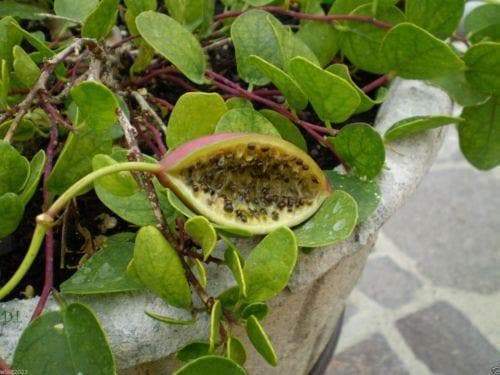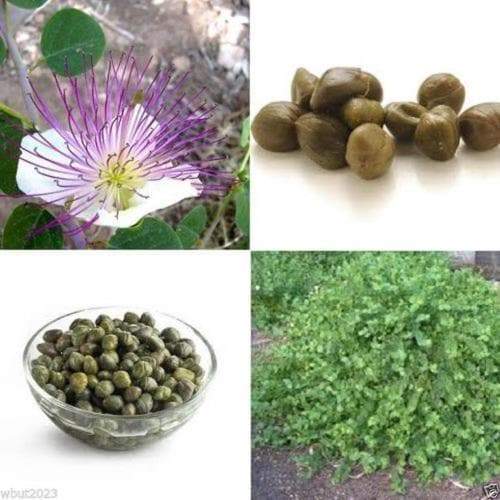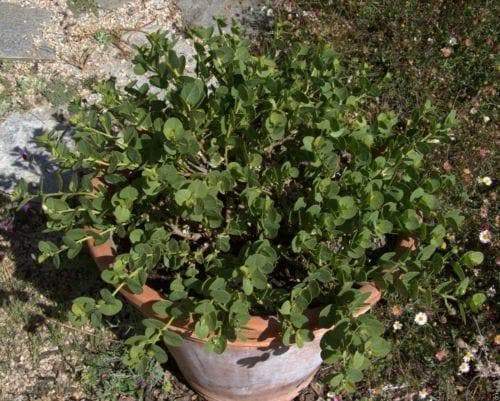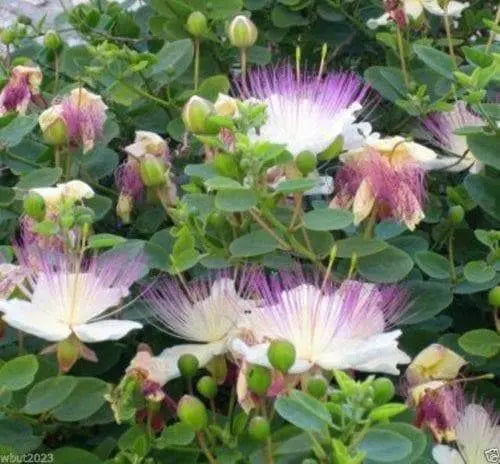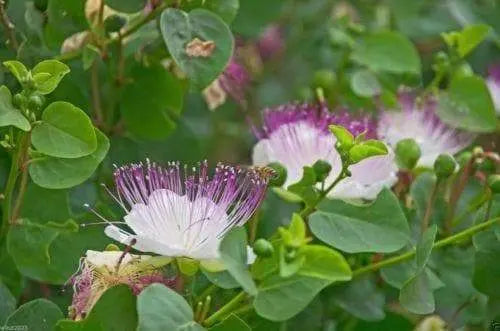Caper Seeds are the perfect choice for herb gardeners wanting to grow their own Caper plant. The seeds are easy to plant, germinate quickly, and deliver a hardy crop of edible, flavorful herbs. Get your own Caper Seeds and enjoy the freshness and flavor of homegrown capers.
- Necessary for pickling and seasoning
- Tall-growing ancient perennial
- Uses: Culinary, Medicinal, Tea
- Thrives in bright, sunny growing areas
Caper plants (Capparis spinosa) are usually found growing wild in the Mediterranean in dry stony areas similar to those where olives are grown. Capers grow in viney brambles, much like blackberries do in North America. Cultivation of a caper bush is most often found in Spain and Africa, but in the past, Southern Russia was also an exporter.
Growing capers are, as mentioned, the buds of a shrub-like perennial (3 to 5 feet high) which has a multitude of spiny branches bearing 2-inch white flowers with purple stamens.
What are capers and how are they used? Capers, unopened flower buds found on the caper bush, are the culinary darlings of many cuisines. Capers can be found in European foods and in those of Africa and India as well, where cultivation of growing capers is found. Growing a caper bush, however, is not an easy task.
So how are capers used? The tiny buds of the caper bush, or Capparis spinosa, are picked on a daily basis and then pickled in vinegar or otherwise brined in salt. The resulting flavor of the caper berry is strong and distinct–like that of mustard and black pepper–due to its concentration of mustard oil, which is released when the plant tissue is crushed. This piquant flavor and aroma lends itself well to a variety of sauces, pizza, fish meats and salads. The immature leaves growing on a caper bush may even be eaten as a cooked vegetable and the burnt remnants of the growing caper bush roots have been utilized as a salt substitute. Caper fruits (caperberry, capperone, or taperone) may be used in making caper-flavored sauces, or sometimes pickled for eating like small gherkins.
A caper bush also has medicinal uses. Growing capers may be harvested to aid in eliminating flatulence, improving liver function, or for its anti-rheumatic effects. An age-old remedy, growing capers have also been reputed to be useful in treating arteriosclerosis, kidney ailments, diuretics, anemia, arthritis, gout and dropsy.
Growing a caper bush can be achieved via propagation from seed, one may try growing in a large pot with a base of coarse rock or crumbled brick and take care not to over water as the plant’s foliage is a natural water conservator.
Caper seeds are very tiny and germinate readily but in low percentiles. Dried seeds are more difficult to germinate and should be soaked for one day in warm water, then wrapped in damp towel, sealed in a jar and refrigerated for 2-3 months. Post refrigeration, re-soak seeds overnight and then plant at a depth of 1 cm in well drained medium.
Caring for caper plants requires a steady stream of strong sunlight and an arid climate. Growing caper plants have a hardiness range similar to olive trees (18 degrees F. or -8 degrees C.) and can also tolerate summer temperatures of over 105 degrees F. (41 degrees C.).
When growing a caper bush, the plant itself is quite tolerant and develops deep root systems, the better to avail itself of its resources in a difficult environment.
When harvesting, size matters. Growing capers are divided into five distinct groups. When growing a caper bush, buds are picked at the immature stage and categorized according to size: nonpareils, capuchins, capotes, seconds, and thirds—with the nonpareils being the most prized… and most expensive. In Italy, capers are graded on a scale from 7 to 16, which indicates their size in millimeters.

![[Seeds] - Caribbeangardenseed](http://caribbeangardenseed.com/cdn/shop/files/gift-card-gift-card-1_1024x1024_dfa857db-9150-4315-a362-7f0bb3fb9c47_60x28.png?v=1703978838)
